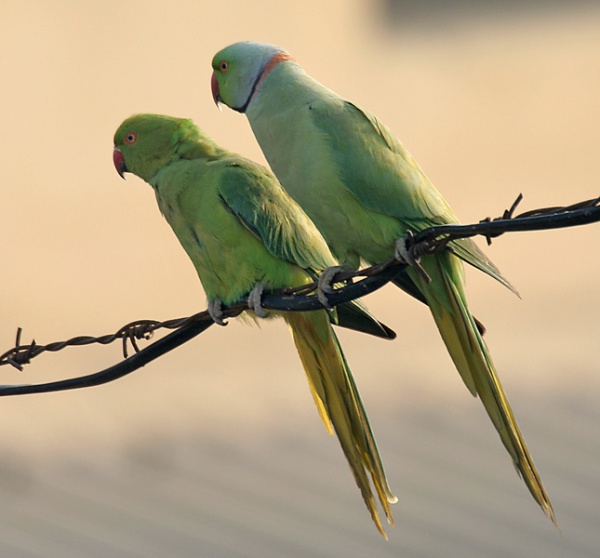Facts About Rose-ringed parakeet
The rose-ringed parakeet, also known as the ring-necked parakeet, is a medium-sized parrot native to Africa and South Asia. Due to the exotic pet trade, these birds now have feral populations in various parts of the world. Distinguishing males from females and juveniles is simple: males sport a red and black neck ring, while females and immature birds may have a grey ring or none at all. These birds are predominantly green, though various color mutations exist in captivity.
Known for their noisiness and herbivorous diet, rose-ringed parakeets are non-migratory and have adapted well to urban environments and areas affected by deforestation. There are four recognized subspecies, divided between African and Asian varieties. Since the 19th century, these adaptable birds have expanded their range to many new countries, even breeding in regions further north than most other parrots.
In the wild, they consume a variety of plant matter. As pets, a diet consisting of fruits, vegetables, pellets, and seeds will keep them content. They are quite popular as pets, partly because they can mimic human speech, making them a favorite in aviculture.
Feral rose-ringed parakeets have established themselves in cities worldwide, especially in Europe. Although they can be charming, they pose a threat to local biodiversity and agriculture. In the UK, their numbers have surged, particularly around London. They can also be found in countries like South Africa, Japan, and the United States. Due to their environmental impact and the threat they pose to native bird species, some regions are considering measures to manage these feral populations.

 Niger
Niger